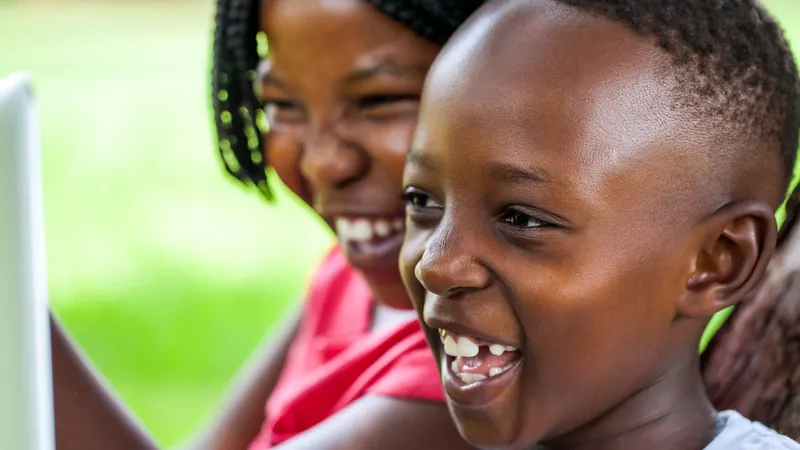Technology. As adults living in the United States, it’s often something we take for granted. We pop open a laptop at a coffee shop and the world is instantly at our fingertips. Having phones, computers and internet that works is our norm. So, it’s easy to forget that for many school-age students, digital equity remains a challenge. Yes, there is major work to be done in US schools – the layers of digital equity are still far from acceptable. But in some other areas of the world, the gap is even wider. The reality for most students in Haiti is technology is absent altogether. I was lucky enough to take part in a program to help mitigate this equity gap for some Haitian children.
Last month I accompanied Jamf’s CEO, Dean Hager, and a team of volunteers, to Grace Academy. The school within Grace Village sits roughly 16 miles north of Port-au-Prince, Haiti in the town of Titanyen. We were there to expand what we implemented over the summer.
During the August visit, I worked with colleagues to bring technology to Grace Village. Over the course of four days, we outfitted an empty concrete room with various Apple products, ultimately created an Innovation Center. Over the last four months, teachers and students have utilized the resources extensively. But while the iPads, MacBook Airs and Apple TVs allowed them to create an elevated learning experience, they needed more. This trip, we delivered.
Through the use of a satellite, and a lot of determination, we successfully brought internet to Grace Village’s Innovation Center. While that may not seem overly important, the benefits it brings are monumental. Check out what this means in a handful of key areas:
Device Management: The Innovation Center’s Mac admins can now connect to Jamf Pro! This means device management for the center’s Apple devices, along with access to a variety of Jamf Pro educational materials.
APP Content Updates: Imagine trying to learn Spanish on Duolingo and getting stuck at a certain level. It’s frustrating! Now, the apps they use will routinely update so students can continuously progress with their learning.
Lesson Planning: What if we told local teachers they couldn’t use the internet to plan for their lessons? The quality of what they teach would drop significantly! Now, with internet access, the teachers at Grace Village can provide higher quality lessons to their students.
Apple Teacher: The Haitian teachers are new to Apple products. That’s why having access to Apple Teacher is essential as they become more proficient with their devices.
Internet Filtering: Protecting children from inappropriate content is essential in a school setting. Now using Securly, school leaders can proactively set up specific filtering parameters so students only see what they should.
So you see, gaining access to the internet is a big deal for Grace Village. But as a former educator, I couldn’t leave without having some quality interaction with the kids and teachers. So we played with technology.
The Sphero SPRK+ robotic balls were the highlight of the day. Kids of all ages and abilities, including a young man with learning disabilities, participated. While the younger kiddos drew shapes for the ball to follow, the older ones calculated specific routes with more advanced coding techniques. The joy that radiated from those children when the ball rolled was nothing short of moving. It was my highlight. Want to see the kids in action? Check out this short video.
I also had the opportunity to run workshops with the teachers. Though some of them couldn’t find their iPad’s home button when we started, by the end of the day, they were copying, pasting and creating their own unique “About Me” project in Keynote. I attribute this success directly to the simplicity of the iPad.
Currently, a student, along with the Innovation Center’s coordinator, are managing the devices with basic Jamf Pro tasks like: device name changes and user assignment; adding a custom wallpaper; updating the inventory command; and turning on Lost Mode if needed. Both men are continuing to learn about Jamf Pro by watching the Jamf 100 videos with French subtitles. They hope to one day take the Jamf certification course and fully manage all of the devices on their own.
In addition to the internet and education, we left Grace Village with 20 additional iPads, (all outfitted with Logitech Rugged Combo cases) two MacBook Pros and 13 Sphero SPRK+ robots – all of which I’m confident will see great use and continue to provide a pathway to a better future for the children at Grace Village. The 48 student iPads are stored in an Ergotron cart managed by the student tech helpers.
As next steps, in 2018 we’ll bring the students eSpark Learning as a way to provide personalized learning paths for English language and preK-third grade math skills. We also expect to deploy 1-to-1 iPads, beginning with the primary students. A fulltime Haitian instructional coach is about to start in the Innovation Center to provide professional development and mentoring to other teachers. Gradual and measured progress will be the theme; however, we’ll need luck to keep up with the kids.
by Category:
Have market trends, Apple updates and Jamf news delivered directly to your inbox.
To learn more about how we collect, use, disclose, transfer, and store your information, please visit our Privacy Policy.

